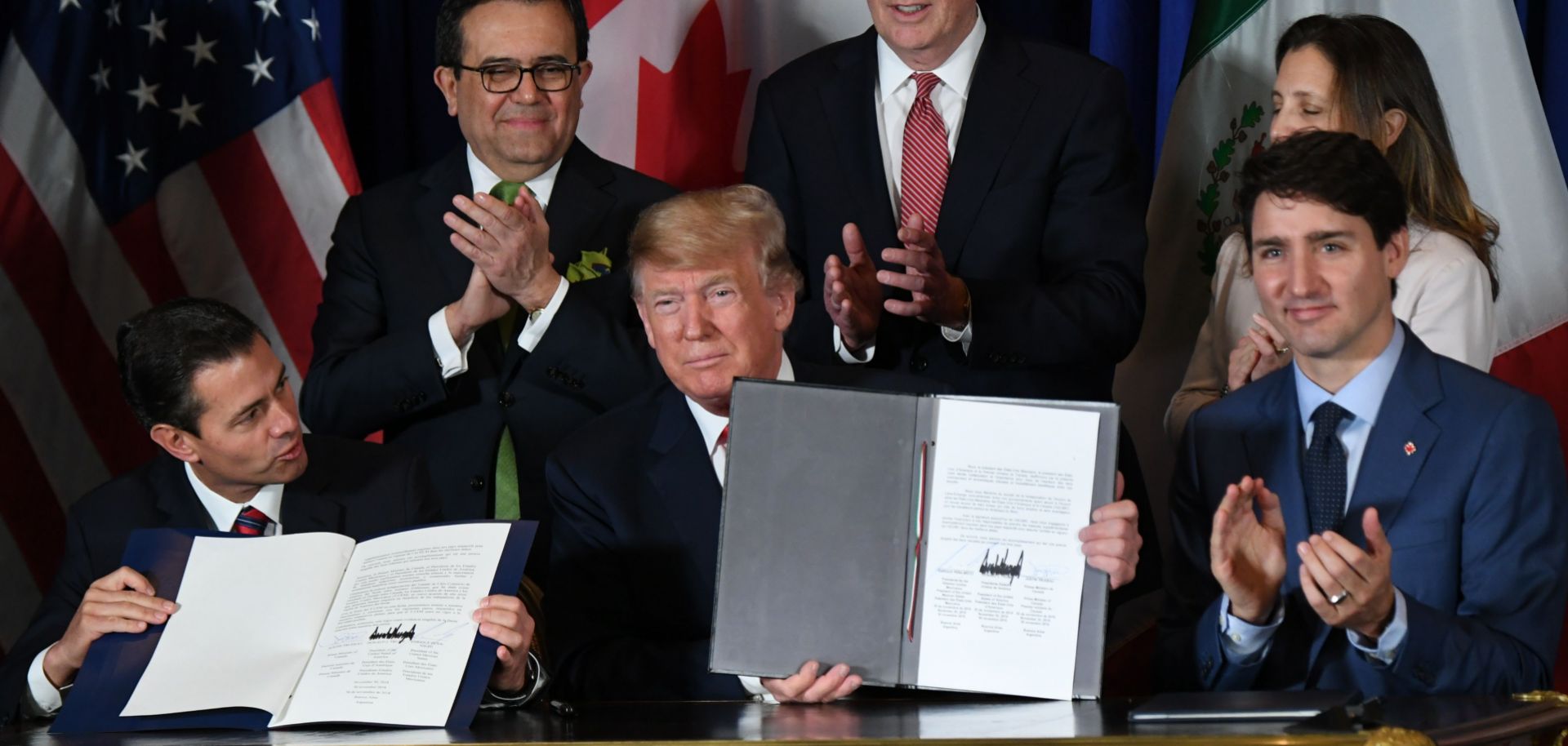GUIDANCE
North America Has a New Trade Pact. Now What?
Nov 30, 2018 | 19:33 GMT

Mexican President Enrique Pena Nieto (left), U.S. President Donald Trump (center) and Canadian Prime Minister Justin Trudeau sit together after signing a new free trade agreement in Buenos Aires, Argentina, on Nov. 30. Trudeau, meanwhile, conspicuously avoided showing his signature for the cameras.
(MARTIN BERNETTI/AFP/Getty Images)
Highlights
- The new trade agreement has been signed, but its ratification will likely be slow in all three countries.
- Although the countries did not sign any binding deal on auto quotas, the Trump administration could take action that would effectively forestall U.S. automakers from moving production to Canada and Mexico.
- The new NAFTA deal has shown that other countries negotiating new trade deals with the United States cannot expect Washington to lift tariffs it has already imposed on their products.
Subscribe Now
SubscribeAlready have an account?
